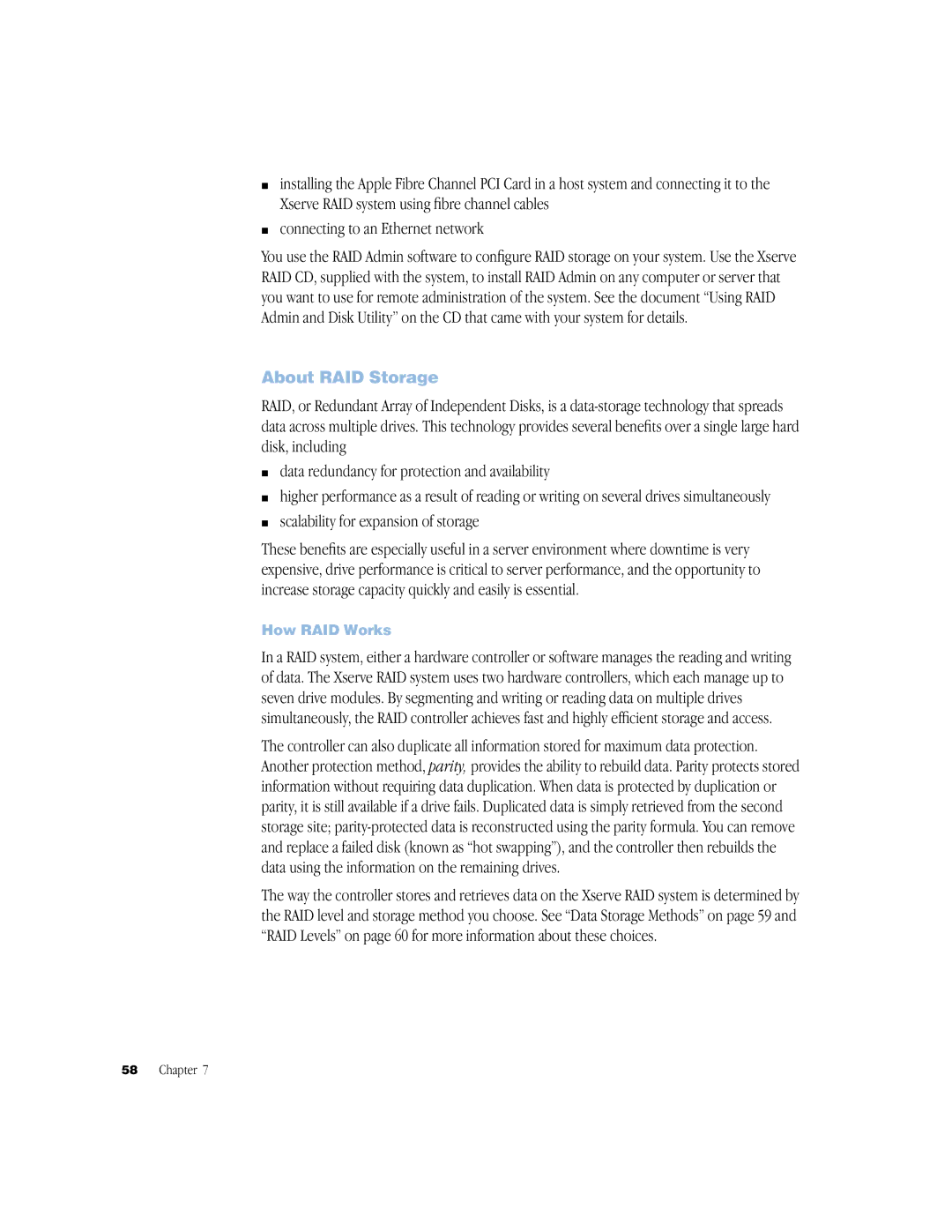minstalling the Apple Fibre Channel PCI Card in a host system and connecting it to the Xserve RAID system using fibre channel cables
mconnecting to an Ethernet network
You use the RAID Admin software to configure RAID storage on your system. Use the Xserve RAID CD, supplied with the system, to install RAID Admin on any computer or server that you want to use for remote administration of the system. See the document “Using RAID Admin and Disk Utility” on the CD that came with your system for details.
About RAID Storage
RAID, or Redundant Array of Independent Disks, is a
mdata redundancy for protection and availability
mhigher performance as a result of reading or writing on several drives simultaneously
mscalability for expansion of storage
These benefits are especially useful in a server environment where downtime is very expensive, drive performance is critical to server performance, and the opportunity to increase storage capacity quickly and easily is essential.
How RAID Works
In a RAID system, either a hardware controller or software manages the reading and writing of data. The Xserve RAID system uses two hardware controllers, which each manage up to seven drive modules. By segmenting and writing or reading data on multiple drives simultaneously, the RAID controller achieves fast and highly efficient storage and access.
The controller can also duplicate all information stored for maximum data protection. Another protection method, parity, provides the ability to rebuild data. Parity protects stored information without requiring data duplication. When data is protected by duplication or parity, it is still available if a drive fails. Duplicated data is simply retrieved from the second storage site;
The way the controller stores and retrieves data on the Xserve RAID system is determined by the RAID level and storage method you choose. See “Data Storage Methods” on page 59 and “RAID Levels” on page 60 for more information about these choices.
58 Chapter 7
